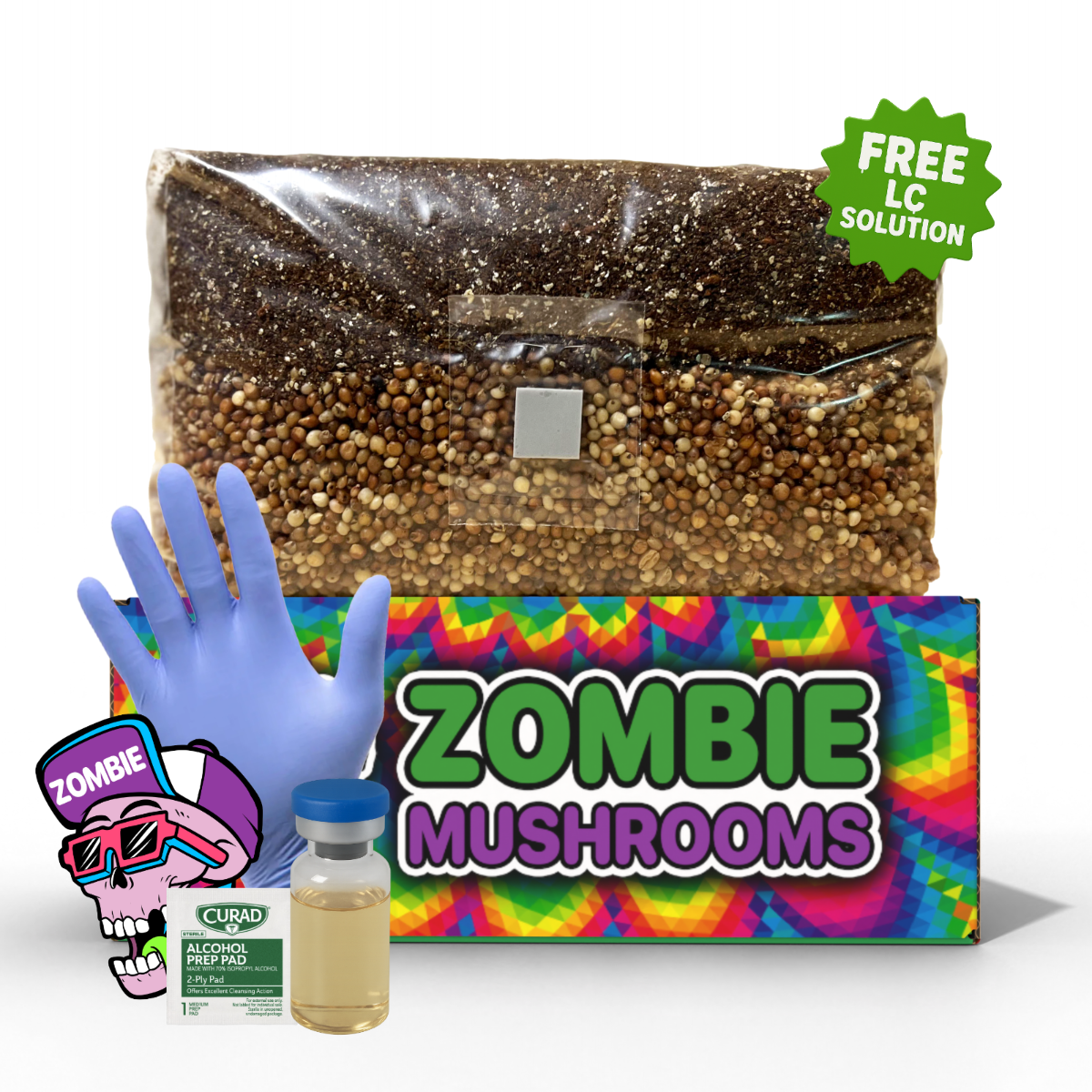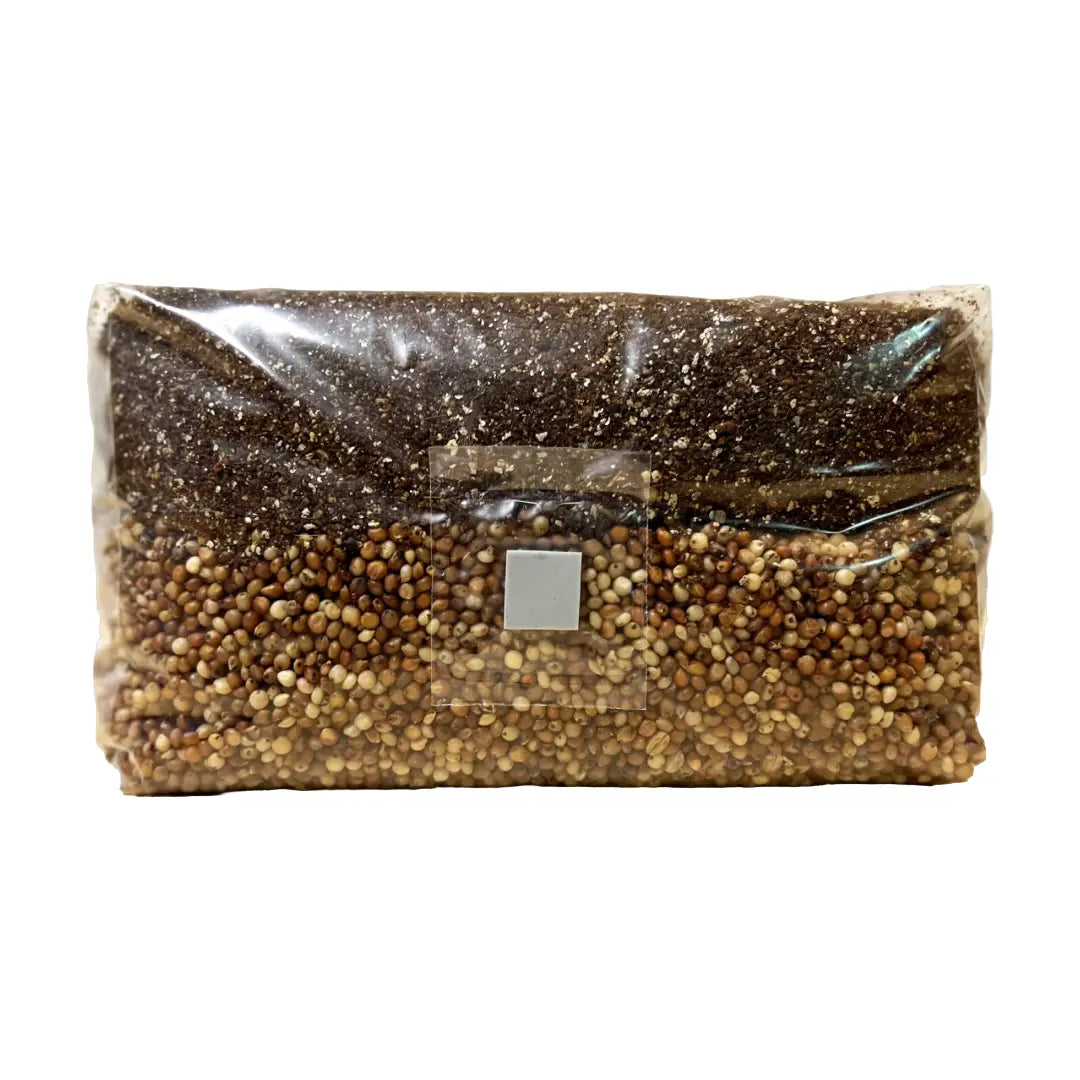⬇️ Prefer to listen instead? ⬇️
- 🍯 Mycelium grows well in a 4% honey-water solution, but growth can change because honey's makeup differs.
- 🧫 Liquid culture, especially honey LC, helps mushrooms grow much faster than just using spores.
- 🦠 Without good sterilization, there is a high risk of contamination. This is because sugar-rich liquids feed bad bacteria.
- 🌡️ Mycelium grows best in liquid culture at 70–80°F. It also helps to stir it now and then.
- 🌱 Not all mushroom types grow the same with honey LC. Fancy mushrooms often grow better with malt extract or glucose.
Honey liquid culture is easy to get and cheap to make for growing mushrooms. Home growers and hobbyists use it a lot. You mix water and honey to make a simple nutrient solution. This helps mycelium grow fast in a clean liquid. This guide talks about honey liquid culture. We will cover how to make it, how to get the best results, and how to avoid problems. And then, we will compare it to other mushroom liquid cultures like light malt extract or glucose. Once your liquid culture is thriving, our mushroom grow bags make the ideal next step, giving your mycelium a clean and nutrient-rich space to colonize and fruit.

1. What Is Liquid Culture in Mushroom Growing?
Liquid culture (LC) is a strong tool for mushroom growers. It is a clean sugar or nutrient liquid. Growers add mycelium to this liquid. Mycelium is the thin, root-like part of a fungus. Spores are asleep and take time to grow. But liquid culture has active, growing mycelium. This mycelium is ready to grow on a new substrate right away.
This fast start greatly cuts down the time from adding the culture to harvesting mushrooms. It also makes it more likely that the mycelium will grow well. This is because active mycelium has already started eating and making more of itself. Using LCs avoids the different genetics and slow starts that often happen with spore syringes. It gives growers a head start when growing mushrooms.

2. So, What Exactly Is Honey Liquid Culture?
Honey liquid culture is a kind of mushroom liquid culture that uses water and honey. It uses the natural sugar in honey, mainly glucose and fructose. This sugar acts as food for the growing mycelium. The usual recipe for honey LC is a 4% solution. This means mixing 40 grams of honey with every 1 liter of water.
People choose honey because it is cheap, easy to find, and simple to use at home. You do not need special tools. It also does not turn brown as easily as some other sugars during sterilization, if you mix it correctly.
Why 4%?
The 4% amount is often called the best spot in mushroom growing books. It helps fungi grow well without raising the risk of contamination. Too much sugar can cause bad microbes to grow. Too little can stop mycelium from growing. Rush & Smith (2018) say that 4% sugar is a good starting point for most fungi in liquid culture.

3. The 4% Honey Liquid Culture Recipe
Making honey LC is easy. But using clean methods is very important for it to work.
Ingredients and Equipment
- 1 liter distilled or filtered water
- 40 grams (about 2 tablespoons) of light, raw, or pasteurized honey
- Glass media bottle or mason jar. It needs a self-healing injection port and a lid that lets air pass.
- Pressure cooker (it must reach 15 PSI)
- Alcohol lamp or flame to clean your tools
- Spore syringe or a piece of clean agar culture
Step-by-Step Instructions
- Mix: Put 40g of honey into 1L of water. Make sure it mixes completely.
- Jar Prep: Pour the liquid into your jar that can be sterilized. Leave at least 20% empty space at the top. This stops overflow when pressure cooking.
- Cap: Close the lid loosely. Or use a special LC lid that has an air filter and injection port.
- Sterilize: Pressure cook at 15 PSI for 20–30 minutes. Do not cook too long; this stops the sugar from getting dark.
- Cool Down: Let it sit until it gets to room temperature, for at least 12 hours.
- Inoculation: Work in a clean place. A still air box or flow hood is best. Clean your tools. Then, inject spores or move agar into the cooled LC. Use clean methods.
- Incubate: Keep the jar in a dark place where the temperature stays steady. It should be between 70–80°F (21–27°C).
Do not use dark or too much processed honey. These might have dirt in them or break down with heat. Light, flowery honeys usually give clearer liquid and better results.
4. Getting the Best Mycelium Growth in Honey LC
After you add the mycelium, you should see it start to grow in a few days. But, managing it well helps make the process faster and safer.
Temperature
Keep the temperature for growth between 70–80°F (21–27°C). This is best for types like Psilocybe cubensis. If the temperature goes too far from this range, growth can stop or bad things can grow.
Agitation
Gently swirl the jar every 1–2 days. This helps keep the mycelium floating and gives it oxygen. A magnetic stir plate is best. It keeps the liquid moving without breaking the jar's clean seals. But be careful not to stir too much, especially when you see white clouds of mycelium.
Visual Monitoring
Healthy mycelium looks like thin clouds or threads. They can be light to thick white strands. The liquid should stay fairly clear. Signs of contamination are:
- Liquid that looks milky or cloudy
- Bad smells
- Green, pink, or black spots
- Slimy feel or too many bubbles
If you see any of these, throw out the culture. Then clean all your tools. This stops the contamination from spreading.
5. How Long Does Mycelium Take to Grow in Honey LC?
How fast it grows changes. It depends on the mushroom type, conditions, and where you got the mycelium (spores or agar). On average:
- Spores: You see the first signs in 4–7 days. It fully grows in 14–21 days.
- Agar wedge: You see growth in 2–5 days. It fully grows in 10–14 days.
Rush & Smith (2018) saw that honey helps growth, but sometimes slower than pure glucose or malt extract. This is because honey has many natural parts. These include tiny bits of minerals and things that fight germs. They might slow down some fungi a little, but help others.
6. Good Things About Using Honey Liquid Culture
Many mushroom growers, especially new ones, like honey LC because it has many good points:
✅ Advantages
- Costs less: Honey is cheaper and easier to get than lab materials.
- Fast Results: Adding active mycelium cuts down the total time it takes to grow.
- Works with many types: It is good for hardy types like Psilocybe cubensis, oyster, and shiitake mushrooms.
- Natural parts: Many people like to use more natural things instead of man-made sugar sources.
In Wuest & Moore’s (2005) study, 4% honey LC worked well for several mushrooms that grow on dead matter. It proved to be a good liquid for general use.

7. Bad Points and Things to Watch Out For
Honey is simple, which is good. But it also has some limits:
⚠️ Disadvantages
- Can change: Every honey type has different sugars. This can change how steady growth is and how fast it happens.
- Dirt: Even clean honey might have tiny bits of dirt or spores from bees or flowers. This can lead to unexpected results.
- Contamination risk: If you do not clean it well, the high sugar will help bacteria grow.
- Does not work with all types: Some fancy or medicinal mushrooms (like Lion’s Mane, Reishi) like liquids with more exact nutrients.
Stamets (2000) says that more complex mushroom types often need a more steady and expected growing surface. So, liquids like light malt extract or dextrose are better for big grows or for experts.

8. Other Liquids You Can Use Instead of Honey
If you want to try new things or grow harder mushroom types, think about using other food bases:
🔬 Common Liquid Culture Bases
- Light Malt Extract (LME): Many like it because it is consistent and has good food. It is great for pro growers or bigger grows.
- Karo Syrup (Corn Syrup): Easy to find and control. It makes a clear liquid, which helps you see the growth better.
- Dextrose or Glucose: Best for fungi that need sugars they can use quickly.
- Premade LC Kits: You can buy these clean, ready-to-use liquids. They often have mixes of sugars, vitamins, and minerals. This helps them work with more types of mushrooms.
Each of these has its own good points. And they can change how your mushroom culture grows a lot.
9. When to Use Honey LC (And When Not To)
Deciding when honey LC is right depends on what you want to do, the type of mushroom, and how much you grow.
🍯 Good Times to Use It
- New growers starting mushrooms as a fun activity
- Cheap, small home growing setups
- Trying out fast-growing, common types like Psilocybe cubensis, oyster, or shiitake mushrooms
❌ Not Good For
- Growing slow or touchy types like Hericium erinaceus (Lion's Mane)
- Business growers or anyone growing more than 5–10 jars
- Harder growing projects that need tight control of conditions
For bigger grows or types that need complex food, more steady formulas like LME or dextrose help you get the same results again and again. You can also know how they will grow.

10. How to Stop Contamination
Liquid cultures are good, but they can easily get contaminated. This is because their liquid is rich in sugar.
💡 Best Ways to Stop Contamination
- Clean completely: Always pressure cook your culture at 15 PSI. Boiling is not enough.
- Use the right lids: Put in self-healing injection ports and filters that let air pass.
- Add culture using clean methods: Flame-clean needles and work inside a still air box.
- Check often: Color changes, bad smells, and strange textures show there are problems.
- Label and keep separate: Write the date on each jar. Keep them apart to find contamination early.
"If you are not sure, throw it out" is a good saying when you might have contaminated liquid culture.

11. Other Growing Methods You Might Try
Honey LC can be where you start for many harder and useful mushroom growing methods.
📦 Next Steps
- PF Tek Inoculation: Use LC to grow on BRF cakes quicker than with spores.
- Grain Spawn Preparation: Quickly add culture to clean grain jars. These are used to start bigger grows.
- CVG Substrate Change: Move from jars to big grow bags. Use coco coir, vermiculite, and gypsum.
- Cloning and Keeping Separate: Move mushroom tissue to agar. Then separate it and move it back to LC to get steady genetics.
- Compare Studies: See how mycelium grows in different LC types (honey versus LME versus glucose).
12. Is Honey Liquid Culture Worth It?
Yes, for sure. This is especially true if you are just starting your mushroom growing hobby. Honey liquid culture is one of the easiest and most adaptable ways to learn about mycelium growth, clean steps, and liquid inoculation. It does not cost a lot to start. It also helps you get better at your methods. And then you can work with harder and business-level cultures.
If you are growing Psilocybe cubensis, oyster mushrooms, or just looking at fungi for the first time, honey LC gives you a valuable and cheap way in. It helps you learn the art and science of mycology.
🛒 Ready to start? Look at our supplies at Zombie Mushrooms. Get clean tools, culture kits, and expert help to begin your first, or next, mushroom project.
Citations:
- Stamets, P. (2000). Growing gourmet and medicinal mushrooms. Berkeley: Ten Speed Press.
- Rush, L. D., & Smith, M. R. (2018). Fungal Culture in Nutrient Solutions: A Guide to Liquid Culture Media. Journal of Microbial Cultivation, 33(2), 120–134.
- Wuest, P. J., & Moore, D. (2005). The Mushroom Cultivator's Handbook. Mycology Press.



